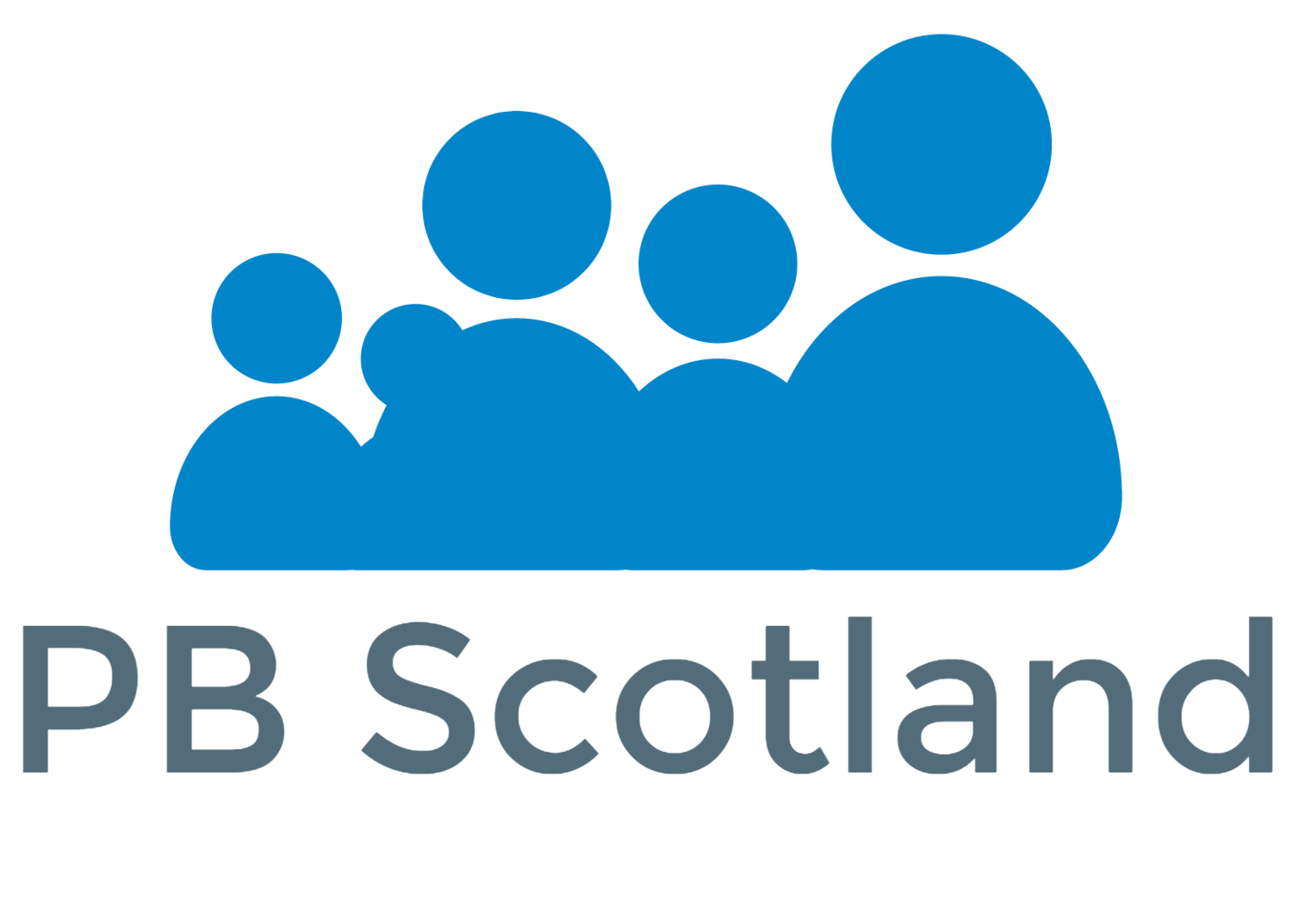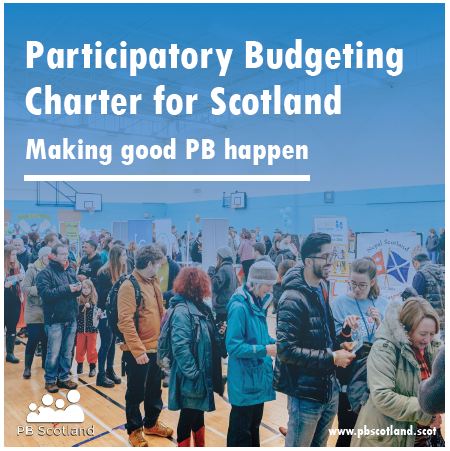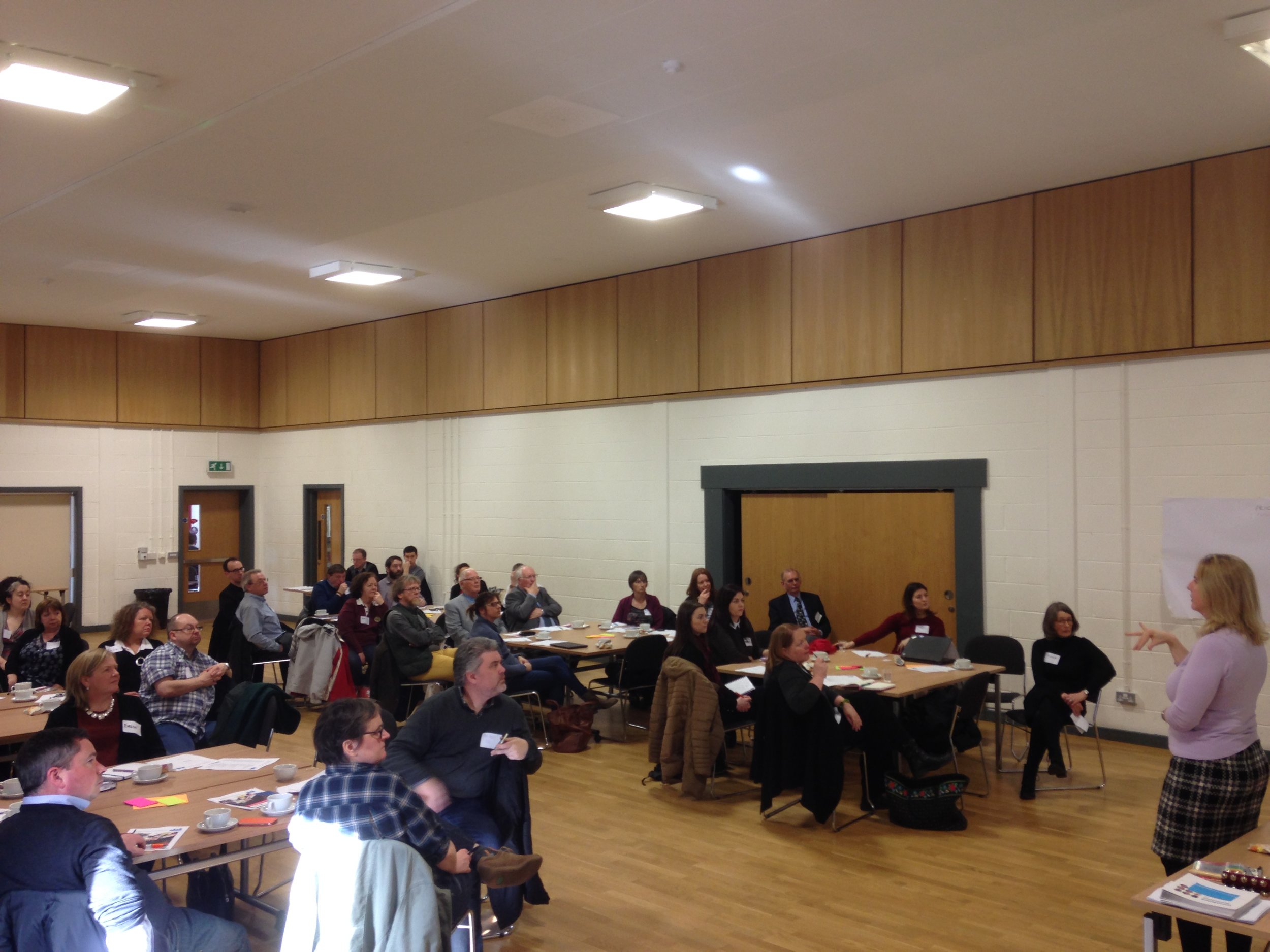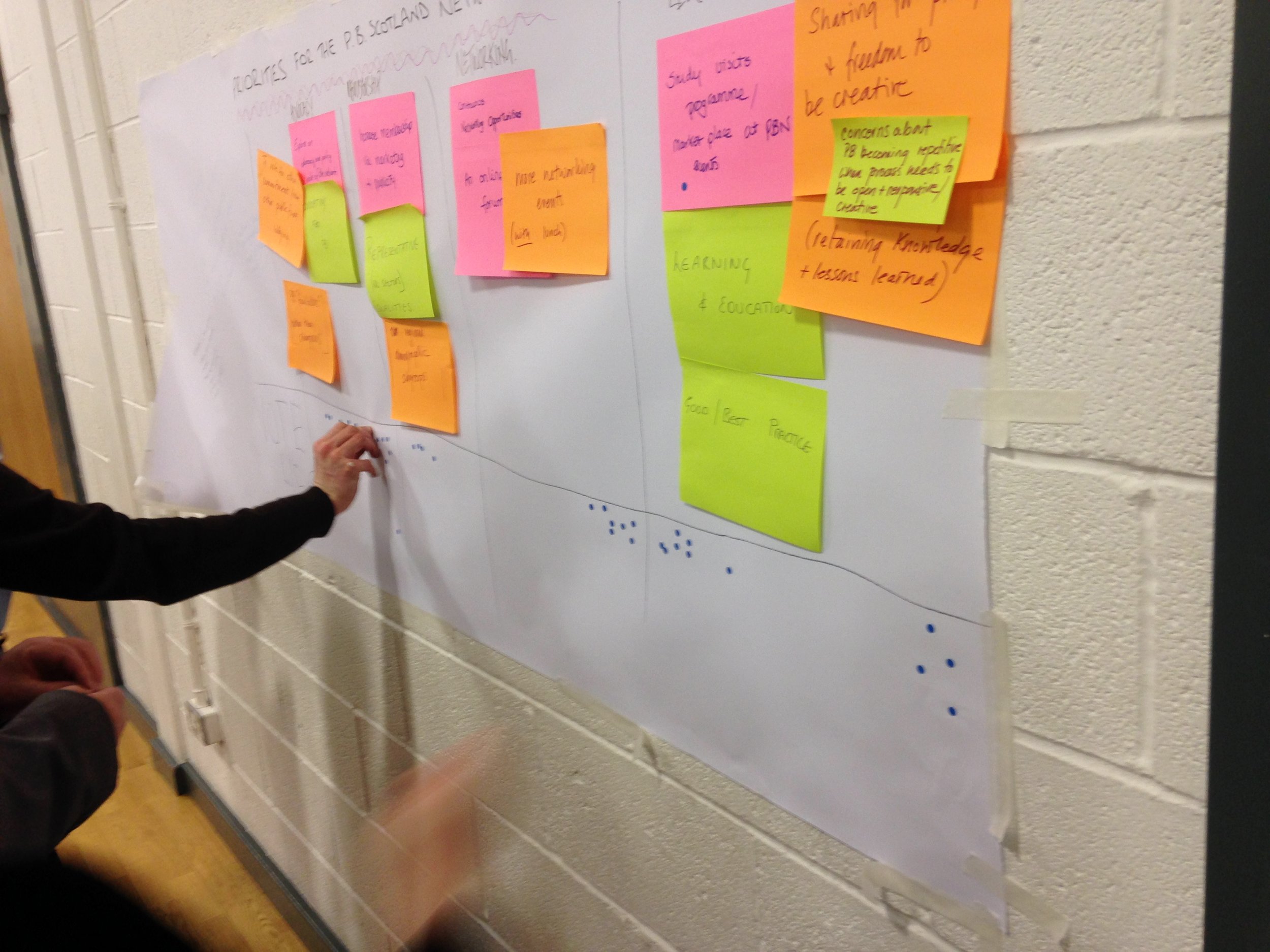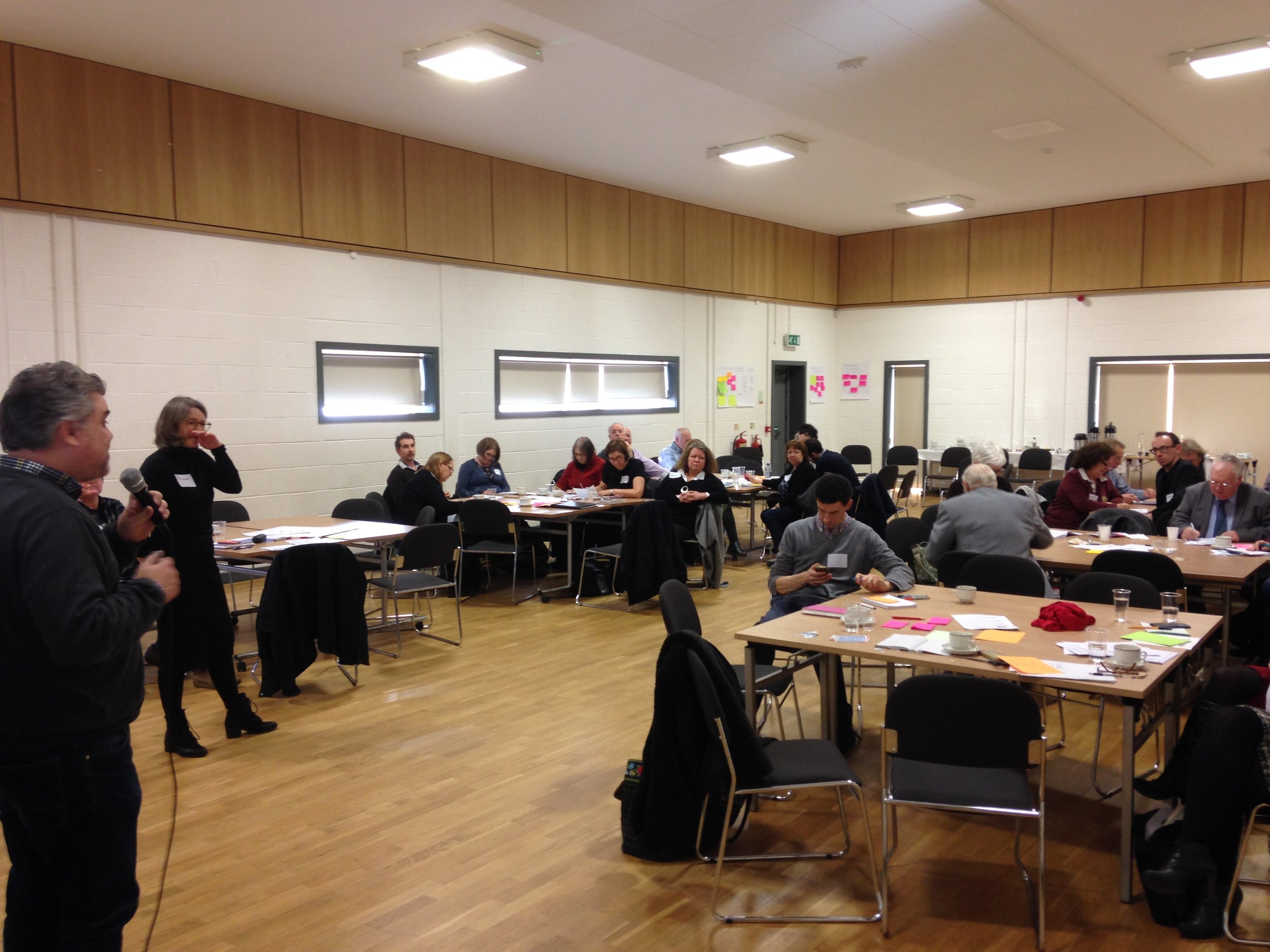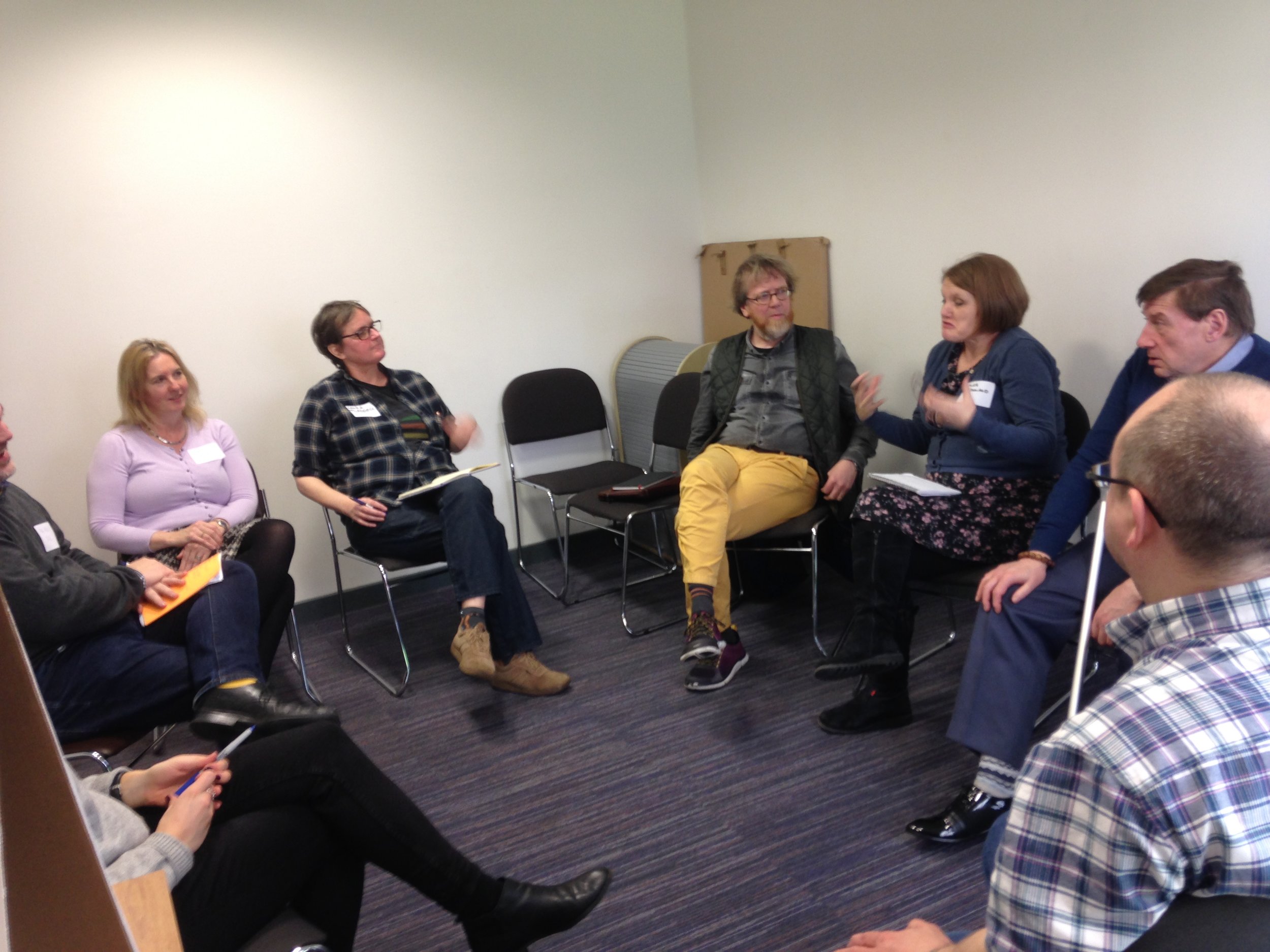Building on experience: PB Scotland Network’s first ever learning event
/“I now have a greater understanding of some of the equality issues, and issues in respect to using digital tools”
“Brilliant opportunity to network with people with a range of experiences”
“The overall presentation was very good and has opened up a new vista”
These were just some of the comments from participants at the PB Scotland Network’s first learning event on the 22nd February at Townhead Village Hall in Glasgow.
Using open space and facilitated discussion, the event was an opportunity for those in the network to share experience, tricky issues, thoughts and ideas about participatory budgeting (PB) with each other.
Following a brief welcome and introductions, Kathleen Glazik from the Scottish Government gave a brief run through of how PB is being developed at a policy level in Scotland. Connecting the interest in PB to wider the public service reform agenda, she described how PB has grown exponentially since 2014. The Scottish Government, she added, has supported this by investing £2m into PB in 2016/17 through the Community Choices Fund.
Workshops
The event then broke into three discussion groups, focusing on three themes which were consistently raised at the national PB conference…
ensuring that addressing inequalities is at the heart of the PB process
the use of technology and its role in supporting dialogue, and
evaluation of impact
Can a PB process address inequality?
The main lesson drawn from this discussion was that PB can be part of the process of addressing inequality, but that a longer, more in-depth, process is required. Participants and steering groups should be informed about inequality and equality and there should be opportunities for continuous wider participation. Power needs to be shared and there should be transparency in all decisions. If PB is carried out in isolation from wider community engagement, and without the above checks and balances, then there is a risk that PB can widen inequality.
The role of technology in PB
Participants made the distinction between using technology to vote at events and online PB processes. The benefits of digital voting were seen to include freeing up organisers to spend more time with participants. Concerns about the flexibility of online processes were addressed, and it was pointed out that digital methods can be altered for specific requirements. Security and authentication were also discussed. Robust processes may help with trust and legitimacy; however, they could also become a barrier to participation. One tip shared was that allowing participants to have several votes encourages people to diversify and consider different ideas. The importance of transparency was also emphasised, which can address people's suspicions of technology.
Evaluation of PB
Evaluation was seen as being about more than satisfying funders, as it is a crucial way to show communities what has been achieved. Community participation in the evaluation process was also seen as valuable, although communities would need to be supported properly to do this. The conversation then broadened out to look at the challenge of moving from short-term grant making to longer-term priority setting and planning. Good evaluation should be a key ingredient of such a move, and should help PB become one important element of community empowerment and participatory democracy.
Open discussion
After lunch, participants moved into an open discussion, where people identified key issues and then moved between conversations they were interested in. Some people chose to continue discussions from the morning workshops, and other key themes that emerged were the mainstreaming of PB and the sharing of power.
Mainstreaming PB
Central to this discussion was clarifying what is meant by mainstreaming (the need for more existing examples was highlighted here). For instance, is the much-talked about target of distributing 1% of public budgets through PB about allocating a proportion of money to be spent using PB or is it about people deciding between spending priorities? More fundamentally, should mainstreaming be less about the money and more about mainstreaming participation? There was also a concern that moving away from a local grant making model could lose the energy of the PB we have seen so far in Scotland.
Sharing Power
This conversation linked PB to wider concerns of community involvement in services, including health, social care and local government. Participants felt that communities should be directing professionals and not the other way around, although a partnership approach between the public sector and communities was also called for. The Community Empowerment (Scotland) Act was referred to and, as with PB, its ability to address power inequalities was seen to hinge on there been adequate support available to communities in the form of capacity building.
Priorities for the PB Scotland Network
The day was rounded off with an exercise to establish what participants thought the PB Scotland Network should be doing to support PB in Scotland. Groups were asked to come up with ideas and these were placed on a wall. Everyone was provided with three sticky dots which they used to indicate their preferred role(s) for the network. The key priorities in order of preference, were as follows:
Advocating for PB – the highest priority amongst participants was that the network should advocate for PB. Suggestions included advocating for 1% of public funds to be distributed through PB, for a wide range of budgets to be allocated using PB and for proper capacity building to support the process.
Learning – the second most voted for role was for the network to facilitate learning, such as arranging study visits and sharing good practice.
Networking – third on the list was organising more networking opportunities.
Membership – increasing membership and ensuring all relevant groups, areas and sectors were represented was the final priority identified.
How participants found the day
Throughout the day, the conversations were honest, critical and constructive. There was a palpable atmosphere of commitment from everyone there, and a deep and expressed desire to learn and to make sure that PB is done right in Scotland.
“Sharing power means building capacity. PB Scotland must advocate this as a short-term priority” participant
Feedback was largely positive, both for the format of the day and for the network and learning opportunities. The choice of venue and catering was also commented on favourably.
“Great to see the varied views of others from a range of sectors” participant
Next steps
PB Scotland will now reflect on the findings generated and the priorities identified and build the resulting actions into our planning for the coming year. We’ll keep you up to date through our e-bulletin and through the site.
Click here to join the network
